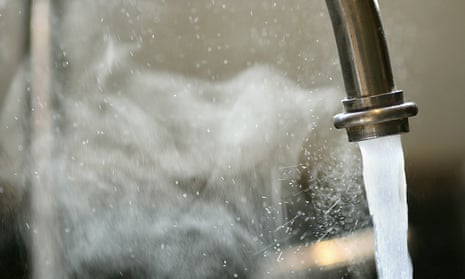People of color in some of America’s wealthiest cities are significantly more likely to live in houses without indoor plumbing essential for running water, new research reveals.
Clean, safe, affordable water is essential for human health and economic survival. Yet access to running water is not universal in the United States, ostensibly the richest country in the world.
Nationwide, almost half a million homes do not have piped water, with the majority – 73% – located in urban areas. In fact, almost half the houses without plumbing are located in the country’s top 50 cities.
Among these, San Francisco, Portland, Milwaukee, San Antonio, Austin and Cleveland have the highest proportion of plumbing poverty, according to the new study published in the Proceedings of the National Academy of Sciences. The largest actual number of homes without piped water were found in New York and Los Angeles.
Using census data from 2013 to 2017, researchers from King’s College London (KCL) found that inequities in water access – like other essential basic services – are racialized in the US.
Households headed by people of color are almost 35% more likely to live without piped water as compared to white households.
In addition, plumbing poverty is also predicted by income inequality and precarious housing conditions such as living in rental accommodation and mobile homes.
“Problems of infrastructure provision reflect long-held and institutionalized ideas of who belongs – and who is excluded – from the social fabric, and the resources and benefits we might take for granted like water,” said lead researcher Katie Meehan, senior lecturer in human geography at KCL.
The findings add to a mounting body of evidence which reveal widespread inequities in access to clean, safe, affordable water in the US in 2020.
Earlier this year, a landmark investigation by the Guardian found that millions of ordinary Americans are facing rising and unaffordable bills for running water, and risk being disconnected or losing their homes if they cannot pay.
Almost 90 Democrat lawmakers have co-sponsored legislation, the Water Act, which would secure $35bn a year to overhaul the nation’s water infrastructure in order to guarantee every American access to clean, affordable running water.
Meehan agrees that comprehensive action is needed. “Systemic problems demand systemic change. Eradicating racialized poverty requires a massive public effort and commitment to transforming the very nature of our economy and social order.”
But, things look likely to get worse before they get better as a result of widening economic inequalities, rising rents and a decline in home ownership since the Great Recession.
Meehan said: “In light of such trends, we expect conditions of water access to deteriorate, especially in cities such as San Francisco, Portland and Los Angeles.”
Overall, the study estimates that just over 1.1 million people live in homes without indoor plumbing. Yet the true number is likely to be much higher as the census routinely undercounts marginalized groups including renters, communities of color and people experiencing homelessness.
In addition to the big cities, clusters of plumbing poverty are also found in regions such as the Rust Belt, greater Appalachia, south-central Florida, Alaska, the lower Mississippi Delta/Louisiana Bayou, and the Four Corners region including the Hopi Reservation and Navajo Nation.
